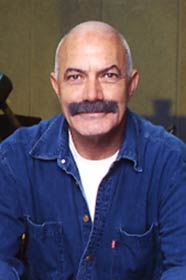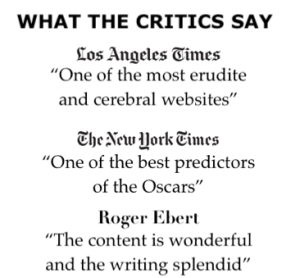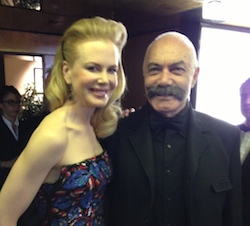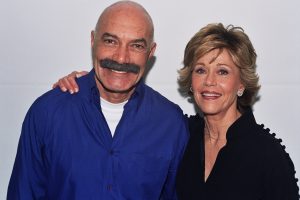Walter Lang’s Desk Set, Tracy and Hepburn’s eighth (and next to last) screen collaboration, is a mildly amusing comedy about the battle of the sexes, this time around placed in the workplace, facing the threat of new technology.
Grade: C+ (** out of *****)
| Desk Set | |
|---|---|

Original poster
|
Set at the Federal Broadcasting Network in Manhattan (modeled on NBC), the screenplay was written by Phoebe and Henry Ephron (Nora Ephron’s parents), based on William Marchant’s 1955 play, which had starred Shirley Booth. The Oscar-winner Booth (Come Back, Little Sheba) was originally set to reprise her stage role.
Hepburn plays Bunny Watson, a stern, dedicated supervisor, who, along with her staff–Peg, Sylvia, and Ruthie–run the reference and research department of a TV network. Their goal is to try and answer questions as quickly as possible–on any subject.
Things change when into their office comes Richard Sumner (Spencer Tracy), an efficiency expert, who considers the installation of a computer brain that would take over the routine work done by the employees.
Needless to say, the employees fear they will be replaced, and their anxieties are confirmed when they see pink slips, printed out by the new payroll computer. Fortunately, it turns out to be a mistake–the machine managed to fire all of the company members, including the president.
Watson is a middle-age woman (Hepburn was actually 49) romantically involved for seven years with the rising network executive Mike Cutler (Gig Young), but there are no definite plans for marriage.
Sumner reveals his romantic interest in Watson, but she believes that EMERAC would always be his first priority, which he denies that. Watson tests him by setting the machine to self-destruct, and Sumner resists fixing it as long as possible, but finally gives in.
The film plays on the familiar theme of the old order versus the new one, and on forces of emotionalism versus rationalism. There is natural resistance to change, and at first the women take an adverse attitude toward Richard, perceiving him as a threatening intruder who’s going to eliminate their jobs.
This premise leads to expected conflicts and misunderstandings for all parties concerned.
But at the end, courtesy of a serviceable (but no more) script from the Ephrons (husband and wife Henry and Phoebe), working from a play that was not great in the first place, the problems are resolved to the satisfaction of all parties.
Side benefit: At a Christmas Party, Hepburn begins (but doesn’t finish) singing Cole Porter’s melodic tune, “Night and Day.”
End Note
The computer referred to as EMERAC is a homoiophone metonym for ENIAC (“Electronic Numerical Integrator And Computer”), developed in the 1940s and considered to be the first electronic computer.
It’s good to see Tracy and Hepburn on screen even if this film represents their weakest collaboration, due to the fact that the Ephrons don’t write as sharp and witty dialogue as Ruth Gordon and Garson Kanin (Adams Rib, Pat and Mike) and Walter Lang is not as good a director as George Cukor.
The movie was only mildly popular at the box-office.
Tracy-Hepburn Screen Pairings
Desk Set was the eighth pairing of Hepburn and Tracy, after a five-year respite–since Cukor’s 1952’s Pat and Mike in 1952. It was the duo’s first non-MGM film, their first color film (CinemaScope). After Desk Set, the couple would make only one more film, in 1967, the Oscar-winning interracial comedy, Stanley Kramer’s Guess Who’s Coming to Dinner?
Cast
Richard Sumner (Spencer Tracy)
Bunny Watson (Katharine Hepburn)
Mike Cutler (Gig Young)
Peg Costello (Joan Blondell)
Sylvia Blair (Dina Merrill)
Ruthie Saylor (Sue Randall)
Miss Warriner (Neva Patterson)
Smithers (Harry Ellerbe)
Mr. Azae (Nicholas Joy)
Credits
Release Date: May 1957
Running time: 103 Minutes.
Produced by Henry Ephron
Director: Walter Lang
Screenplay: Phoebe and Henry Ephron, based on a play by Robert Fryer and Lawrence Karr
Camera: Leon Shamroy
Editor: Robert Simpson
Music: Cyril Mockbridge
Art Directors: Lyle Wheeler and Maurice Ransford
Set Decoration: Walter Scott and Paul S. Fox
Special Effects: Ray Kellogg
Budget $1,865,000
Box office $1.7 million (US rentals)










